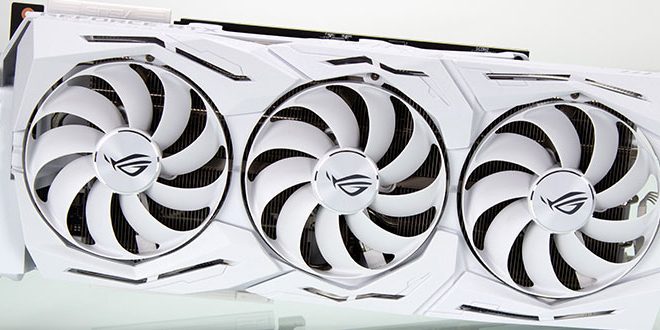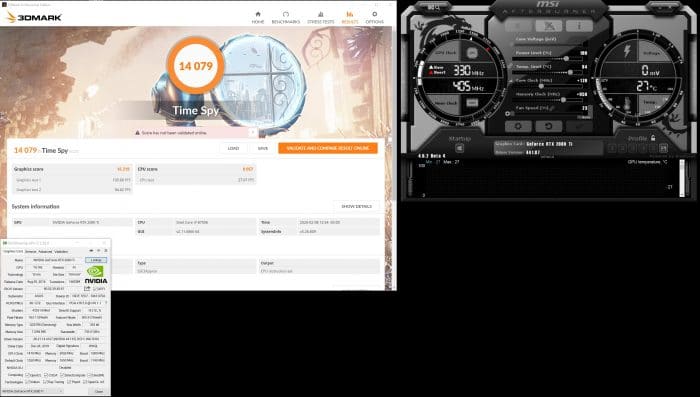Overclocking
Overclocking the GTX 2000 Series cards are very similar to 10 series, but there have been some improvements in how the boost works in version 4 over version 3, which was on Pascal.
Default the ASUS RTX 2080 Ti White Edition GPU boosts up to 1965 – 1980 stock during loading. The cap reason is not thermals as the GPU stays ion the low 60 range during loading and runs headlong into power limits long before it needs its cooling capabilities. Cranking the power limit and turning up the wick on the GPU netted us a +120 on the GPU, which showed a steady-state clock in the 2085MHz range. This is a roughly 6% increase in GPU clock speed.
Memory on the ASUS, we see 14,798MHz as read during testing. Turning things up, and we get the card up to +950 or 16,698MHz effective clock speed from the Samsung GDDR6. This overclock is a roughly 12% increase over the out of the box clock and the maximum we could get out of the card due to power limit restrictions.
With the overclocks dialed in, we see that the graphics score jumped by 7%, which is a solid gain for the lower loading standard time spy test and even widens the gap between every other card on our charts. Now let’s see how the ASUS 2080 Ti fared in Time Spy Extreme when overclocked.
Moving to Time spy extreme, we see the overclock deliver another 7% gain, which puts the ASUS 2080 Ti well above the TITAN RTX, to which it had fallen by a small margin previously.
 Bjorn3D.com Bjorn3d.com – Satisfying Your Daily Tech Cravings Since 1996
Bjorn3D.com Bjorn3d.com – Satisfying Your Daily Tech Cravings Since 1996












Only galax knows how to make a white card